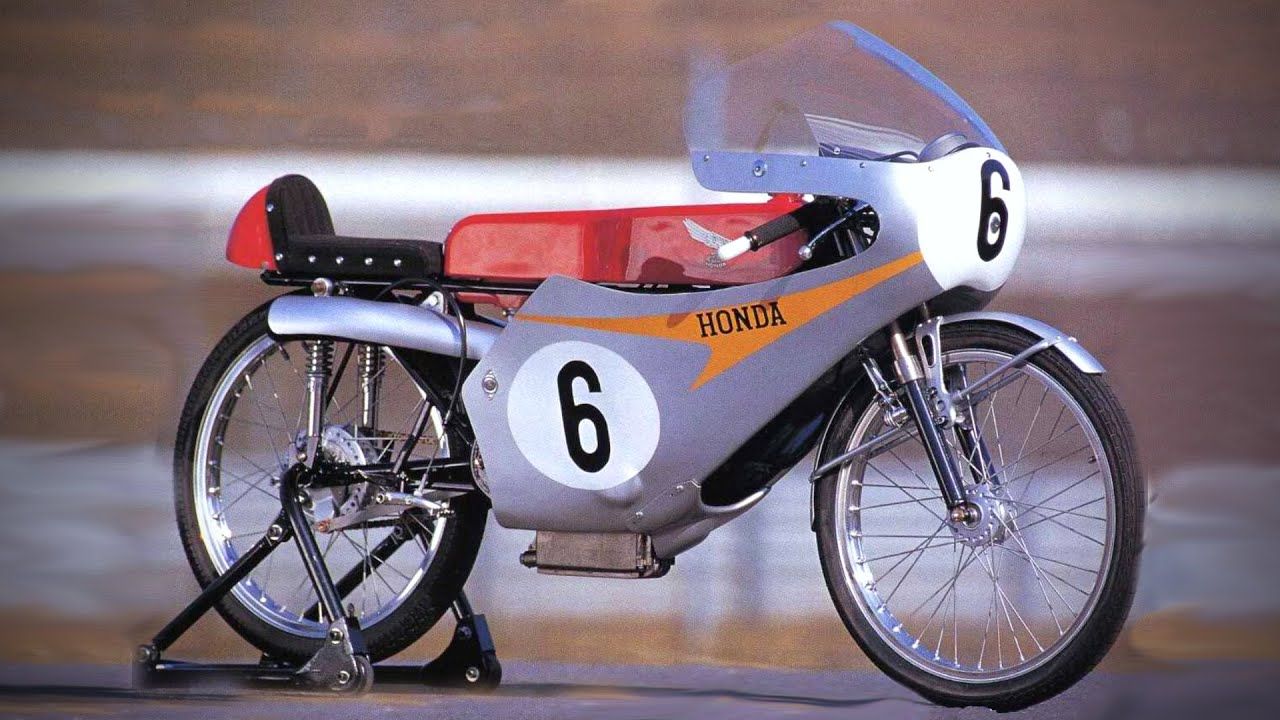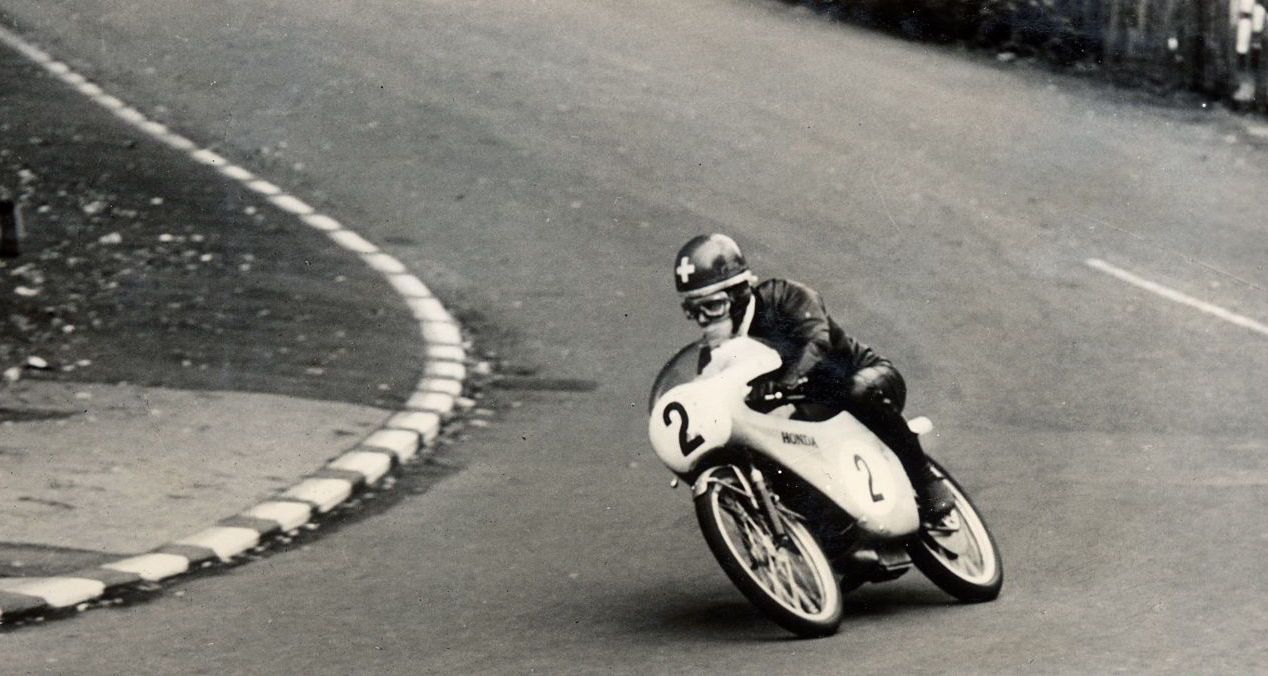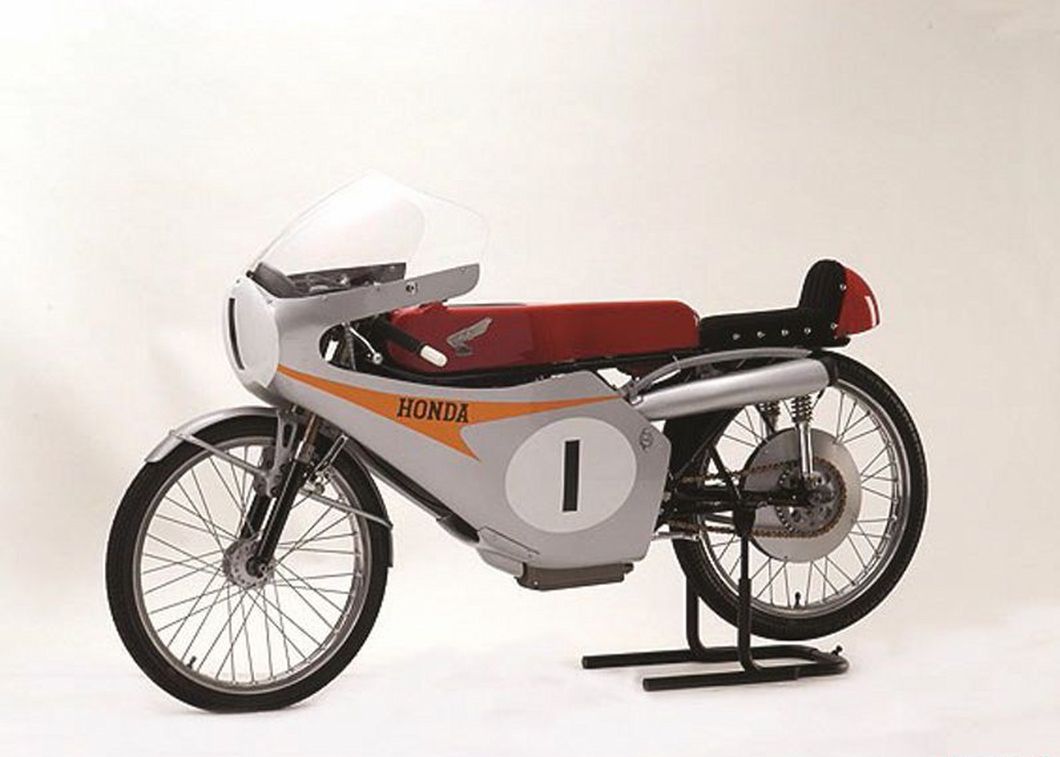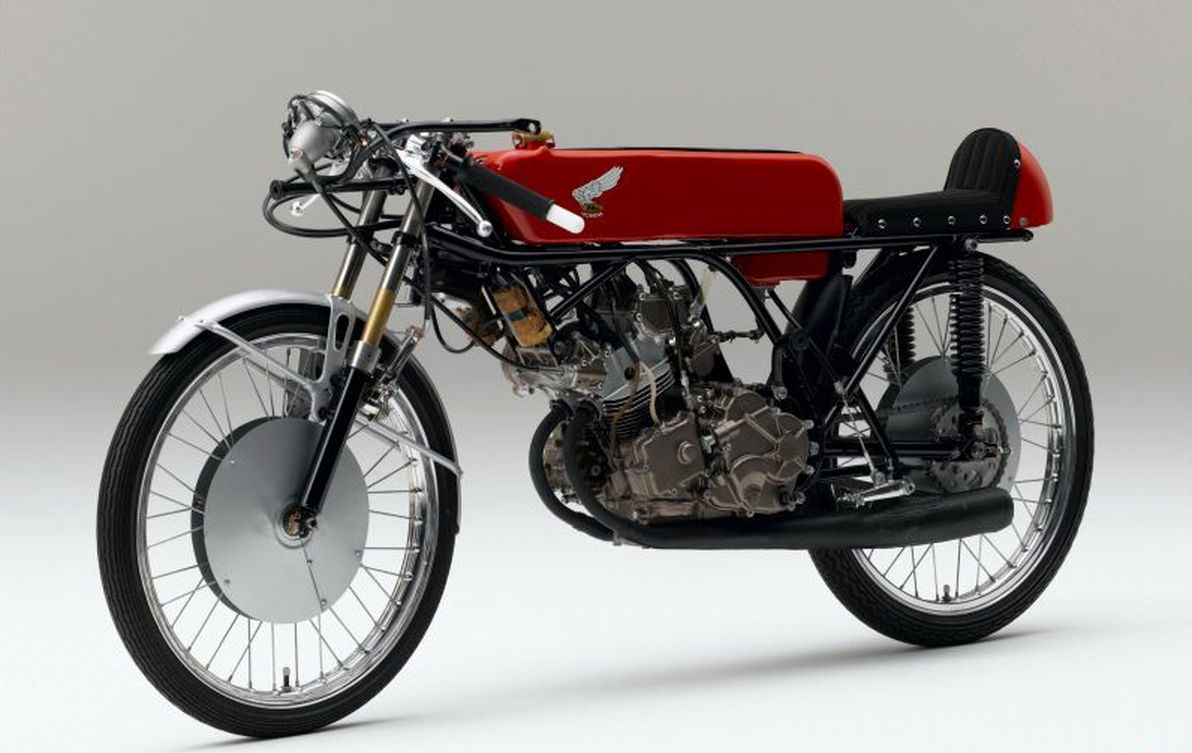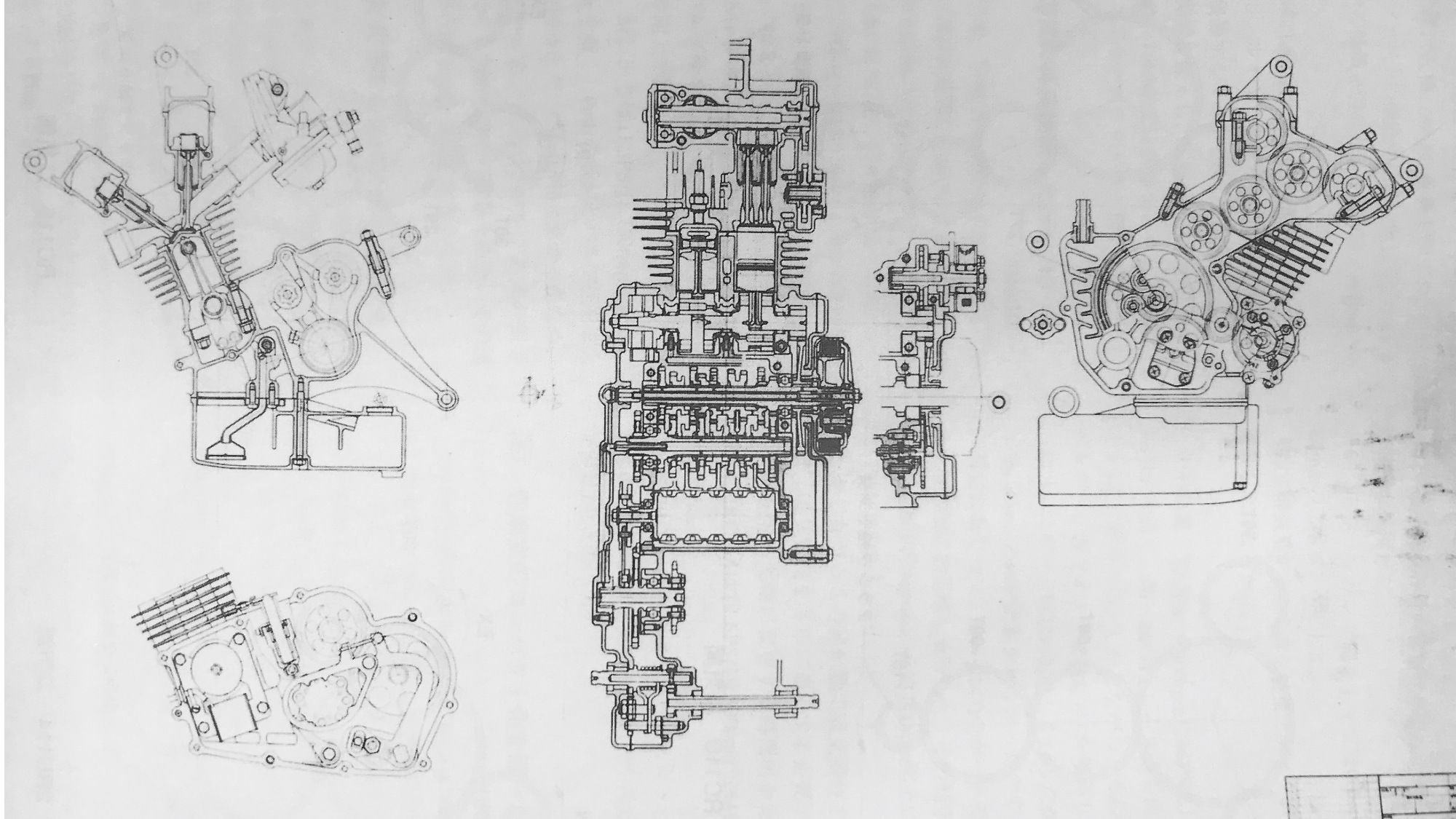When the Japanese came into Grand Prix motorcycle racing in the late 1950s, no one could have foreseen what a dominant force it would become, not only in racing but in motorcycling in general. And certainly, no one could have foreseen the engineering that would go into the bikes.
The Honda RC116, 50cc Grand Prix Bike
Looking back, it's hard to understand how, at one point, the Japanese motorcycle industry was a completely unknown force. When Honda made its first tentative steps onto the world stage with an appearance at the Isle Of Man TT, in 1959, no one knew who they were, nor could they anticipate how dominant they would become on the world stage.
At the time, Honda's obsession was with power: their thinking was that the more power, the faster you would be. Unfortunately, they forgot that to harness the power, you needed a good stiff chassis. Mike Hailwood famously christened his 500cc GP bike 'The Bronco' and fellow riders who tried it marveled that he managed to keep it on the track, so unwieldy was it.
In the smaller classes, this wasn't such a problem and some of the engineering has to be seen to be believed: four-cylinder 350s, six-cylinder 250s, and, the subject of this video, twin-cylinder 50cc machines that could rev to 20,000+rpm and produced power outputs that are still unbeaten in terms of bhp/liter of displacement: up to 16bhp from 50cc.
It was a crazy period in racing, in which the Japanese factories were spending ever more money on the development of new engines until the F.I.M. stepped in and started slapping restrictions on the number of cylinders allowed, depending on overall capacity: 50cc = one cylinder, 250cc = two cylinders and so on.
The spending frenzy couldn't last and Honda pulled out at the end of 1967, only to officially return to GP racing in the 1980s. But, while it lasted, it was an incredible time for racing motorcycles.

